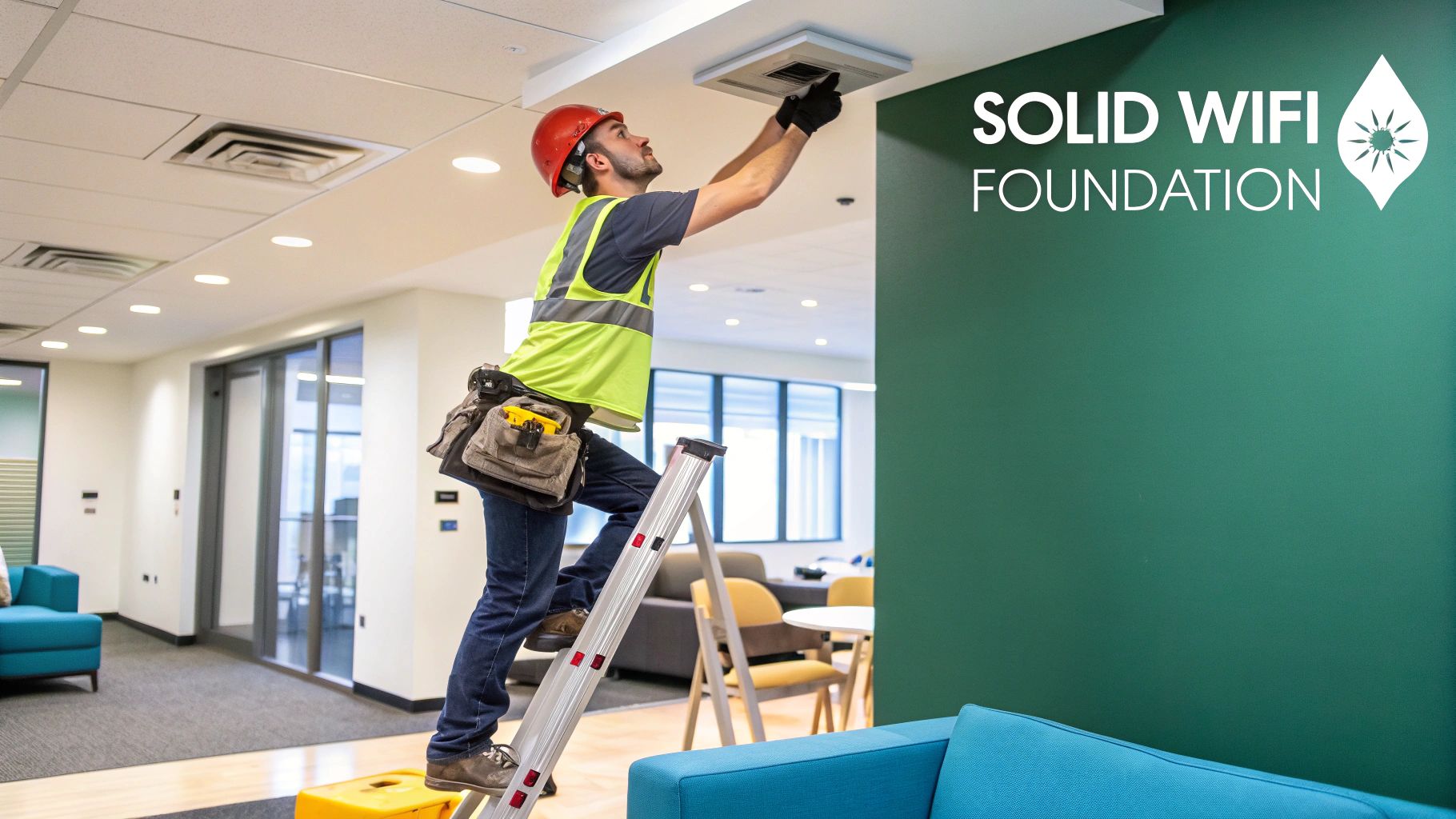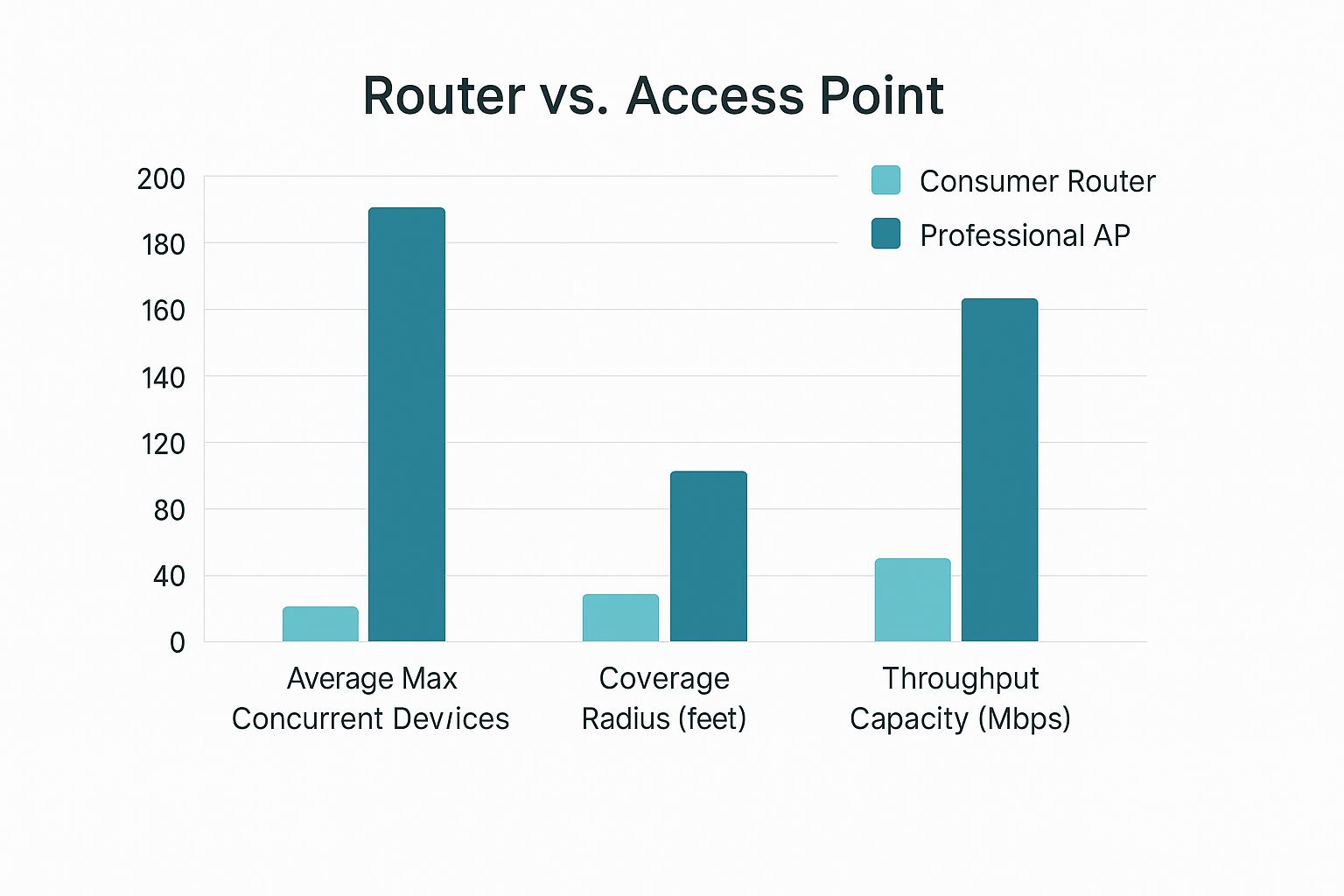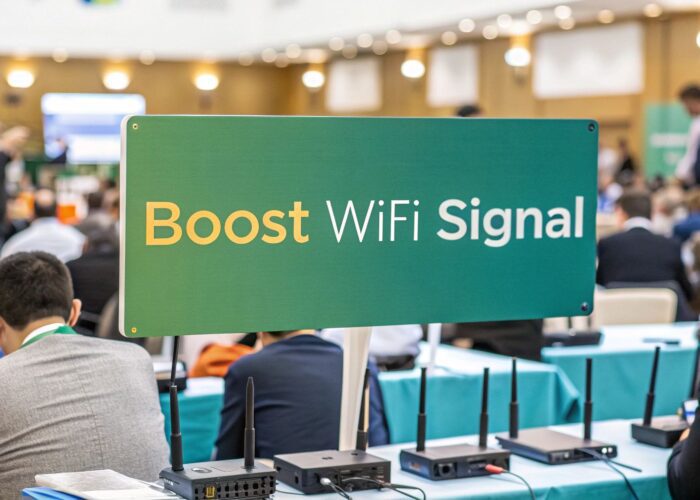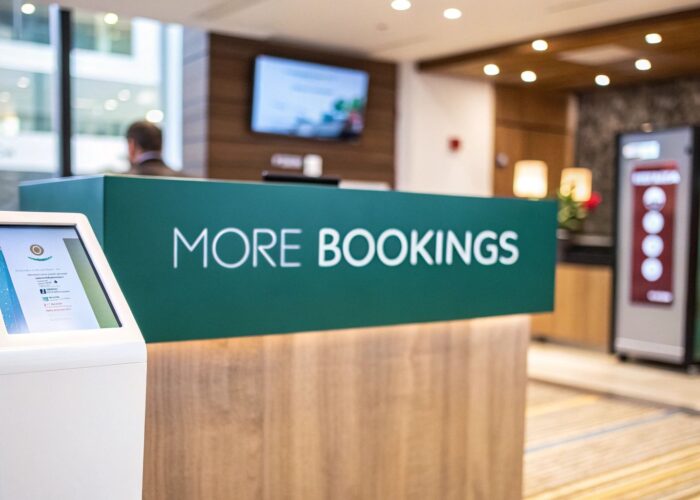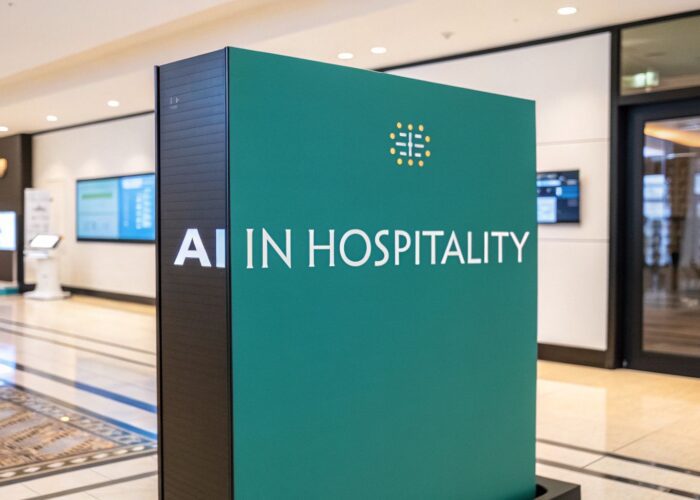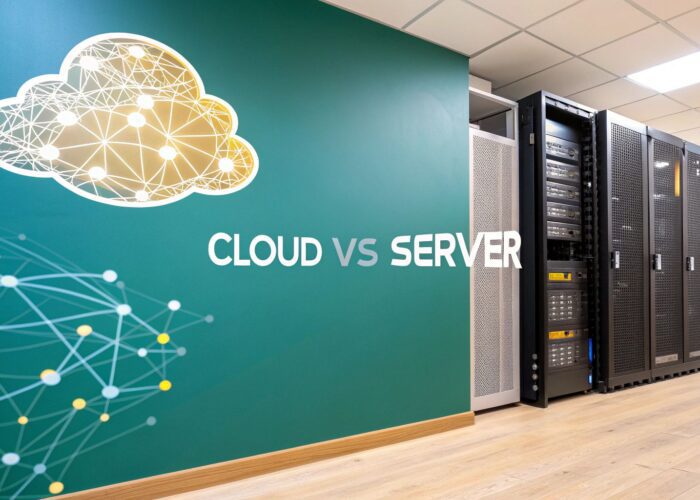Hey there! We’ve all been there: the endlessly spinning wheel, the dreaded “Connecting…” message. It feels like a small hiccup, but in reality, it’s a full-blown productivity killer. A low signal WiFi connection translates directly to dropped client calls, failed transactions at the register, or students who can't get to their online assignments. It's a quiet but constant drain on efficiency, no matter if you're in a corporate high-rise, a busy retail store, or a school campus.
The Real Cost of a Weak WiFi Signal
We all know that one dead zone—the back corner of the office or the far end of the classroom where the Wi-Fi signal just gives up. While it might seem like a minor annoyance, the ripple effect of a weak connection adds up to a surprisingly high cost. Let's have a friendly chat about what that really means in different settings.

In the corporate world, the problem gets even bigger with the rise of Bring Your Own Device (BYOD) policies. When your team tries to connect their own laptops and phones, a patchy network creates a constant source of frustration. They’re often forced onto insecure, unreliable connections, which wastes time and opens up some serious security holes. This is exactly why modern Authentication Solutions like IPSK and EasyPSK, especially on top-notch platforms like Cisco Meraki, have become so crucial for giving everyone secure, individual access without the headache.
Sector-Specific Pain Points
A poor Wi-Fi signal hurts everyone, but the specific pain points change depending on where you are:
- Education: When students can’t reliably connect to online portals or turn in their work, the whole learning environment grinds to a halt. A strong, stable network isn't a "nice-to-have" anymore; it's a fundamental requirement for modern education.
- Retail: Here, a weak signal can kill sales on the spot. If your point-of-sale systems are lagging or a customer can't log into your guest network through a Captive Portal, you've created a frustrating experience that might cost you their business for good.
- Corporate BYOD: Unstable connections mean dropped video calls and an inability to reach cloud-based apps. Productivity plummets, and that impact goes straight to the bottom line. You can learn more about these financial impacts by understanding the total cost of ownership for your network gear.
The real problem isn't just about raw speed—it's about consistency. A network that constantly drops out is often worse than one that's just slow. That unpredictability completely shatters user confidence in the tools they need to do their jobs.
Even with 5G rolling out everywhere, getting a good signal indoors is still a huge challenge. While mobile data usage is skyrocketing, some studies show that around 30% of users still struggle with daily Wi-Fi signal problems. They have access to incredible internet speeds but can't actually use them. This is a stark reminder that a well-designed internal wireless network is absolutely essential to get around physical walls and interference.
Building a Rock-Solid Wi-Fi Foundation
You wouldn't build a house on a shaky foundation, right? The same logic applies to your network. When you're dealing with low signal Wi-Fi, the first place to look is the hardware itself. It’s tempting to grab a consumer router off the shelf at a big-box store, but in a busy Retail or Corporate BYOD environment, that’s like trying to put out a warehouse fire with a garden hose.
Those consumer-grade boxes are only built for a handful of connections. They simply can't handle the demands of dozens, or even hundreds, of devices found in a school or office. This is where professional-grade access points (APs) from industry leaders like Cisco and its cloud-managed Meraki line completely change the game. They are engineered for high-density environments, making sure your connection quality doesn’t nosedive when everyone logs on at 9 AM.
Strategic Placement Is Everything
Here's the thing: buying better hardware is only half the battle. You have to put it in the right place. Just throwing an AP on a desk in the corner is a surefire recipe for dead zones. The only way to truly understand your space's unique radio frequency (RF) challenges—think concrete walls, metal shelving, or even a running microwave—is with a professional site survey.
A professional site survey isn't just about finding where the signal is weak. It's about proactively designing a network that ensures strong, consistent coverage everywhere it's needed, preventing problems before they even start.
This process involves using specialized tools to map out how radio waves behave in your specific environment. It helps identify sources of interference and pinpoints the optimal locations for each access point. You can learn more about how a professional wireless site survey for your wireless network can eliminate all the guesswork. Getting the AP placement right is also crucial for making sure advanced features like band steering (which gently nudges devices to the faster 5GHz band) and automatic channel planning actually work as intended.
The Right Tools for a Demanding Job
In any modern setting, whether it's an Education campus or a corporate office, your network needs to be more than just a signal provider. It has to be smart, stable, and secure. This is where the synergy between robust hardware and sophisticated software becomes absolutely critical.
A Cisco Meraki infrastructure, for example, provides the raw power and coverage—it's the engine delivering that stable connection. But when you layer this with smart Authentication Solutions that manage Captive Portals or deploy secure access methods like IPSK (also known as EasyPSK), you create a user experience that's both seamless and secure.
This combination ensures every student, shopper, or employee can connect quickly and safely, transforming your Wi-Fi from a simple utility into a powerful business tool. Getting this foundation right from the very beginning is the single most important step you can take to fix low signal Wi-Fi for good.
Improving the User Experience with Smart Authentication
So, you've got a powerful Wi-Fi signal. That’s great, but it’s only half the battle. If getting online is a confusing, frustrating mess, that strong signal doesn't mean much. The real measure of a great network is how seamless and secure the entire experience is, from the moment a user connects.
This is especially critical in high-density environments like Retail, Education, or corporate offices with BYOD policies. A clunky login process creates the same outcome as a low signal wifi zone: abandoned connections, unhappy customers, and lost productivity. This is where modern Authentication Solutions step in, transforming that first interaction into a smooth, positive one.
Take a look at how a basic consumer router stacks up against a professional-grade access point. It quickly becomes clear why robust hardware is the non-negotiable foundation for handling smart authentication in a busy space.
As you can see, professional APs are engineered from the ground up to support the high user counts and large areas you find in business settings, making them the only real choice for deploying advanced features.
Smarter Logins with Captive Portals
For most guest networks, the Captive Portal is the first thing a user ever sees. It's more than just a login page; it's a powerful tool for engagement. In a Retail store, you can use it to flash a daily promotion or ask for an email signup. On a college campus, it can broadcast important announcements or link students to key resources.
When you pair these portals with powerful hardware from vendors like Cisco or manage them through a cloud platform like Meraki, you get full control. You can customize the look to match your brand and deliver key messages, all while keeping the connection secure.
The Power of Individualized Security
In any corporate BYOD environment, a single shared Wi-Fi password is a massive security blind spot. Once that password gets out, your entire network is exposed. This is precisely the problem that advanced methods like Identity Pre-Shared Keys (IPSK), also known as EasyPSK, are designed to solve.
Instead of one password for everyone, IPSK technology allows IT administrators to assign a unique, private key to each individual user or device. If an employee leaves or a device is lost, you simply revoke that single key without disrupting anyone else.
This approach gives you a huge security boost and makes life simpler for users—no more asking around for the latest shared password.
Choosing the right authentication method depends entirely on your environment, security needs, and what you want the user journey to look like.
Comparing Common WiFi Authentication Methods
This table breaks down the pros and cons of different authentication solutions for business environments, helping you choose the right fit for your needs.
| Authentication Method | Best For | User Experience | Security Level |
|---|---|---|---|
| Open Network | Quick, temporary access (e.g., public parks, small cafes) | Easiest possible connection—no password needed. | Very Low |
| Shared Password (PSK) | Small offices, simple guest access | Simple and familiar, but requires sharing a password. | Low |
| Captive Portal | Retail, hospitality, education, large public venues | Can be customized for branding, marketing, or terms of service acceptance. | Medium |
| IPSK / EasyPSK | Corporate BYOD, managed device environments | Seamless and secure after initial setup. | High |
| 802.1X / RADIUS | Enterprise, government, highly secure environments | The most secure option, but can be complex for users and IT. | Very High |
Ultimately, finding the right balance between ease of use and robust security is key to a successful network.
To get a better sense of what's possible, it’s worth exploring different authentication techniques to see which one aligns with your goals. Remember, even in countries with the world's fastest internet, the end-user experience is defined by the quality of the indoor Wi-Fi. A great connection and seamless access have to go hand-in-hand. To see how connectivity and guest expectations are evolving, especially with the rise of IoT, it's helpful to understand hospitality technology trends.
Fine-Tuning Your Network for Peak Performance
Having the right hardware is a fantastic start, but even the best access points can stumble if they aren't configured correctly. If your signal is still weak despite a solid hardware foundation, it's time to pop the hood and dive into your network's radio frequency (RF) settings. This is where you transform your Wi-Fi from a collection of individual devices into a coordinated, high-performing system.
I like to think of it like an orchestra. If every musician plays as loud as they can, all you get is a chaotic mess. But when a conductor balances each instrument, the result is beautiful music. Your access points are the musicians, and your job is to conduct them so they work together, not against each other.
Using Analytics to Pinpoint Problems
Before you touch a single setting, you need to know what you're working with. This is where a powerful network management platform, like the Cisco Meraki dashboard, becomes your best friend. It gives you a single pane of glass to see exactly what's happening on your network in real time.
You can instantly visualize critical data points:
- Client Density: See which areas are crowded with connected devices. This is incredibly useful for understanding high-traffic zones in a Retail store or a busy lecture hall in an Education setting.
- Signal Strength: The dashboard's heatmaps show you precisely where your low signal wifi spots are, completely taking the guesswork out of troubleshooting.
- Interference Sources: It can even identify competing signals from neighboring networks or non-Wi-Fi devices like microwaves and wireless cameras that are polluting your airwaves.
When you layer a solution like Splash Access on top of your Meraki network, you unlock an even deeper level of insight. While Meraki tells you about the network's technical health, Splash Access analytics reveal user behavior—how long people stay, how often they return, and which parts of your Captive Portal they actually use. This combination paints a complete picture of both network performance and the end-user experience.
Actionable Tips for a Healthier Network
With that data in hand, you can start making intelligent adjustments. It's not about cranking everything to the max; it’s about balance and precision. A key strategy here is mastering your RF environment, and you can find some great guidance on how to let the system handle much of the heavy lifting.
Another critical step is adjusting the transmit power of your APs. There’s a common misconception that setting transmit power to 100% is always the best move. In reality, this often creates more problems than it solves, causing APs to "shout" over each other and create co-channel interference. By dialing back the power, you create smaller, more efficient coverage cells that allow for smoother roaming and better performance, especially in dense BYOD Corporate environments.
The goal isn't just to make each access point as loud as possible. It's to create a seamless blanket of coverage where a user's device can gracefully hand off from one AP to the next without a dropped connection.
Finally, take a hard look at your channel assignments. Most networks default to the same crowded channels. Using your analytics dashboard, you can see which channels in your area are least congested and manually assign your APs to cleaner airspace. This one simple tweak can dramatically reduce interference and solve a lot of persistent low signal wifi issues.
The broader connectivity landscape is always moving forward. Globally, mobile internet speeds have soared to an average of 61.52 Mbps, an 80% jump in just two years. Yet, these impressive mobile gains don't solve the indoor Wi-Fi challenge, where signal quality remains a major bottleneck for millions. You can discover more insights on how even top-performing countries face these hurdles in the latest Global Network Excellence Index. This just goes to show why fine-tuning your internal network is more critical than ever to deliver a truly fast and reliable experience.
Expanding Your Coverage with Mesh and Extenders
Sometimes, even the best-placed professional access points struggle to punch through to every corner. I’ve seen this happen in all sorts of places—think historic university buildings with impossibly thick stone walls, or sprawling retail warehouses where metal shelving creates RF chaos. In these tough spots, just cranking up the power on your AP won't cut it. You have to get smarter and extend your network's reach to kill those final low signal wifi dead zones for good.
This is where you’ll hear people talk about mesh networks and range extenders, and it’s crucial to know they aren't the same thing. A cheap extender simply catches the Wi-Fi signal and throws it a little further. The problem? It usually cuts your bandwidth in half for any device connected to it and often creates a clunky handoff as your phone or laptop tries to decide which signal to use.
The Professional Choice: Mesh Networking
A true mesh network, especially one built with enterprise-grade gear from a vendor like Cisco, is a whole different animal. It’s not just a simple relay. Mesh nodes create an intelligent web of connectivity where each access point talks to the others. They work together to automatically route traffic along the fastest, most efficient path available.
The result is a single, unified network. Users can walk from one end of a building to the other without ever noticing a connection drop. It's seamless. For any complex environment, this is the gold standard.
A well-designed Meraki mesh system, for example, can blanket a difficult venue with rock-solid coverage. This kind of robust backbone is also non-negotiable if you’re using advanced Authentication Solutions like IPSK (EasyPSK), which demand a stable connection for devices to stay authenticated as they move around.
A range extender is like shouting to someone in the next room—the message gets there, but it’s weak and distorted. A mesh network is like having a perfectly clear conversation where everyone is part of the same discussion.
When to Use Which Solution
So, when does an extender make sense? Honestly, almost never in a professional setting. For a tiny dead spot in a small, simple office, it might be a quick and dirty fix.
But for any serious deployment—a university campus, a large retail store, or a BYOD Corporate office—a professionally installed mesh network is the only way to go. It’s designed to prevent the very headaches you’re trying to eliminate: signal interference, dropped connections, and infuriatingly inconsistent speeds.
Understanding how these systems are structured is key to making the right call. For a deeper look at the architecture, you can learn more about different mesh network topologies and see firsthand why they create such a superior experience. By choosing the right strategy, you can guarantee that every corner of your venue gets the strong, dependable Wi-Fi your users need for everything from guest Captive Portals to secure, individualized access.
Common WiFi Signal Questions We Hear All the Time
We get a lot of questions about how to best tackle a low signal wifi problem. Below, we've gathered some of the most common ones we hear from organizations in Education, Retail, and BYOD Corporate environments, along with some straightforward advice based on our experience.
Can I Mix Different Brands of Access Points to Improve My Signal?
Technically, you can plug in access points from different manufacturers, but it's a move we strongly advise against in any professional setting. For a network you can actually rely on, sticking with a single-vendor solution like Cisco or Meraki is always the best path forward.
Why? It's all about creating a unified system where devices can roam seamlessly. When a student's laptop or an employee's phone moves between APs from different brands, that "handoff" can be clunky, causing frustrating dropped connections. A cohesive system from one vendor also gives you centralized management, making it infinitely easier to troubleshoot and deploy features like sophisticated Authentication Solutions.
How Often Should I Perform a WiFi Site Survey?
A WiFi site survey should never be a one-and-done event. You absolutely need a full, professional survey before any major network deployment, but you should also plan for a follow-up whenever you make significant changes to the physical space. This could be anything from putting up new walls in an office to reconfiguring the shelving in a Retail store.
Beyond those big changes, it's smart practice to run a quick "health check" at least once a year using your network analytics tools. This is a simple, proactive step that helps you catch new sources of RF interference or coverage gaps that might have popped up over time, keeping your network running smoothly.
What's the Difference Between IPSK and a Regular WiFi Password?
This is a fantastic question that gets right to the heart of modern network security, especially for BYOD Corporate networks. A regular WiFi password (technically a Pre-Shared Key, or PSK) is a single password shared among every single user and device. If that password leaks or an employee leaves, you’re stuck changing it for everyone—a massive logistical and security nightmare.
Identity Pre-Shared Key (IPSK), which you might hear called EasyPSK, is a much more secure and manageable way to handle access.
With IPSK, you generate a unique, individual key for each user or device. If a device is lost or an employee departs, you simply revoke their specific key without disrupting anyone else on the network. This provides individual accountability and dramatically strengthens your security posture.
While tackling these common Wi-Fi questions, it's worth remembering that sometimes what looks like a low signal problem—like those endless loading screens—might actually be caused by external factors like internet restrictions. In those situations, it helps to understand the difference between a poor connection and when slow loading isn't a Wi-Fi glitch.
Ready to transform your guest Wi-Fi from a frustrating utility into a powerful business tool? Splash Access integrates seamlessly with your Cisco Meraki hardware to provide robust authentication, insightful analytics, and a user experience your guests will love. Learn more and get started at https://www.splashaccess.com.
